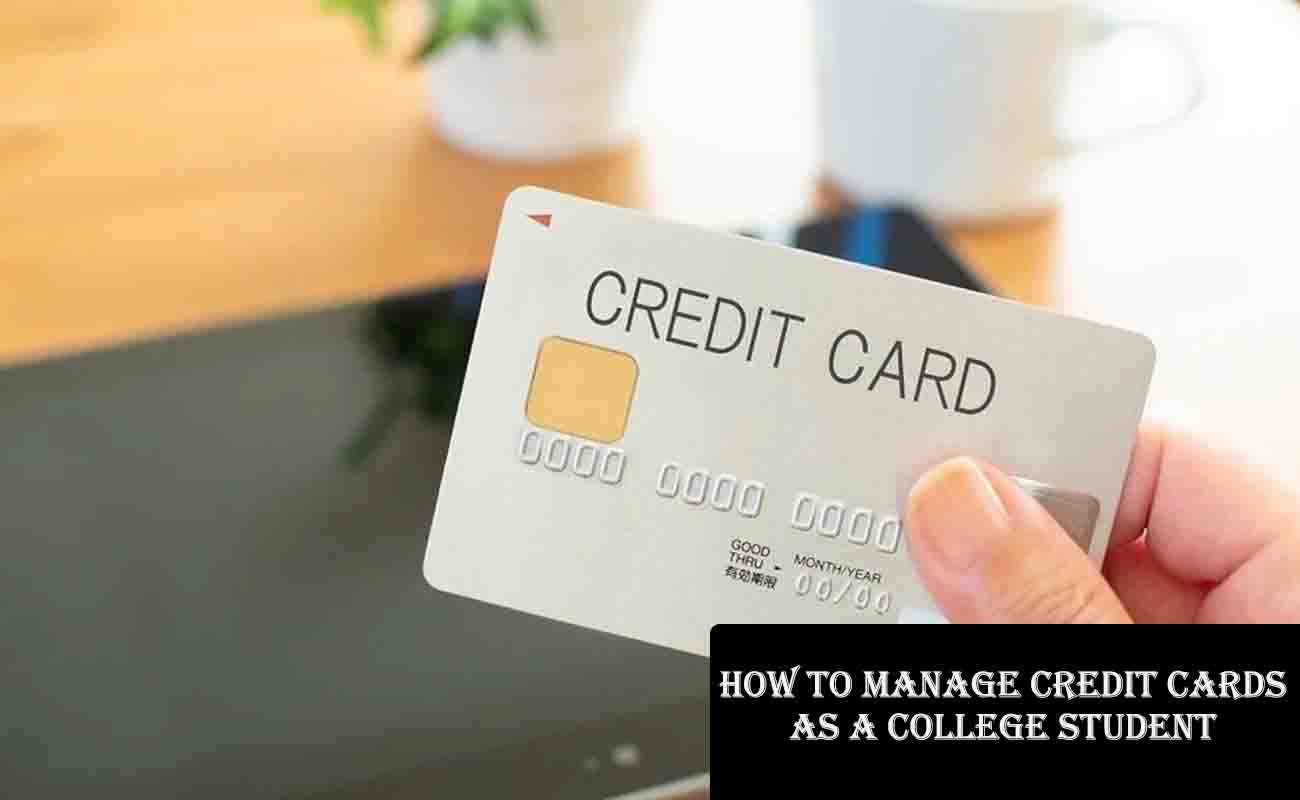I will share some tips on how to Manage Credit Cards as a College Student in this post. Let’s start with the basics, because I know how confusing credit can seem at first. When you use a credit card, you’re borrowing money from the card issuer.

Your credit history tracks how you manage this borrowed money, and it’s used to calculate your credit score. A good score (closer to 850) can open doors to better loans and lower interest rates. For example, when I first learned about credit, I realized that paying bills on time was the most significant factor in maintaining a healthy score.
Your credit score is influenced by factors like payment history, credit utilization (how much of your available credit you use), and the length of your credit history. As a student, you’re likely starting with a blank slate, so every action counts. Check your score for free using tools like CreditWise from Capital One or Chase Credit Journey to stay on top of it.
Choose the Right Credit Card
Picking the right credit card is crucial, and you’ve got options designed just for students. Look for cards with no annual fees, low or no interest rates for an introductory period, and rewards that fit your lifestyle.
For instance, the Discover it® Student Cash Back card offers 5% cash back on rotating categories (up to a quarterly maximum when activated) and 1% on all other purchases, which is great if you spend on things like dining or gas. Another option is the Chase Freedom® Student card, which gives 1% cash back on all purchases and has no annual fee.
When choosing a card, check the terms carefully. Some cards offer a 0% introductory APR, meaning you won’t pay interest on purchases for a set period (usually 6-12 months).
This can be helpful if you need to make a big purchase, like a laptop, but only if you’re sure you can pay it off before the introductory period ends. I learned early on that reading the fine print saves you from surprises later.
| Card Name | Key Features | Best For |
|---|---|---|
| Discover it® Student Cash Back | 5% cash back on rotating categories, no fee | Students who want rewards |
| Chase Freedom® Student | 1% cash back on all purchases, no fee | Simple cash back with no categories |
| Citi Rewards+℠ Student Card | Rounds up points on small purchases, no fee | Frequent small purchases |
Note: Always check current terms as offers may change.
Use Credit Responsibly
Here’s a tip I wish I’d known from the start: treat your credit card like a debit card. Only spend what you can pay off right away. For example, if you’re buying textbooks and the total is $200, make sure you have $200 in your bank account to cover it when the bill comes. This prevents you from carrying a balance, which can lead to interest charges that pile up fast.
Avoid impulse buys, like that late-night pizza or a new pair of sneakers you don’t really need. Before swiping your card, ask yourself, “Can I pay this off this month?” If the answer is no, hold off. Responsible use builds your credit and keeps you out of debt.
Pay on Time
Paying your credit card bill on time is non-negotiable. Late payments can hit you with fees (often $25-$40) and damage your credit score. I set up calendar reminders on my phone to avoid missing due dates, and you can do the same. Better yet, set up automatic payments through your bank to ensure you never forget. If possible, pay the full balance each month to avoid interest. If you can’t pay in full, at least pay the minimum to avoid penalties, but try to pay more to reduce interest costs.
Monitor Your Credit
Keeping an eye on your credit score is like checking your grades—it helps you know where you stand. Use free services like CreditWise or Chase Credit Journey to track your score and see what’s affecting it. For example, payment history makes up about 35% of your score, so paying on time is critical. Credit utilization, or how much of your credit limit you use, is another big factor. Aim to keep it below 30%. So, if your card has a $1,000 limit, try not to carry a balance over $300.
Monitoring your credit also helps you spot errors or fraud early. If you see a charge you didn’t make, contact your card issuer immediately. Most cards have zero-liability policies for unauthorized charges, but you need to report them quickly.
Build Credit History
If you’re starting with no credit history, getting a card can be tough. One option is to become an authorized user on a parent’s or guardian’s credit card, but only if they have a good payment history. Their responsible habits will reflect on your credit report, giving you a head start. Another option is a secured credit card, where you deposit money (say, $200) that becomes your credit limit. It’s like a training wheel for credit—use it wisely, and you’ll build a solid history.
For example, I know someone who started as an authorized user on their mom’s card. By making small purchases and paying them off, they built enough credit to qualify for their own card within a year. You can do this too, but make sure the primary cardholder is reliable.
Avoid Impulse Buying
College life is full of temptations—late-night food runs, concert tickets, or that new gadget everyone’s talking about. It’s easy to swipe your card without thinking, but those small purchases add up. I’ve been there, tempted to buy something just because it’s convenient. Instead, pause and ask, “Do I need this, and can I afford it?” If you’re unsure, wait a day or two. This simple habit can save you from debt.
Try keeping a spending journal for a month. Write down every purchase you make with your card. You’ll be surprised how quickly small expenses add up, and it’ll help you stay mindful.
Set a Budget
Budgeting is your best friend when managing credit cards. Start by listing your income—maybe from a part-time job, scholarships, or family support. Then, list your expenses, like rent, food, transportation, and entertainment. Include your credit card payments in your budget to ensure you can cover them. Apps like Mint or YNAB (You Need A Budget) can make this easier by categorizing your spending and sending alerts when you’re close to your limit.
For example, if you budget $200 for dining out each month, stick to it. If you hit that limit, cook at home instead of using your card for another restaurant meal. This keeps your spending in check and ensures you can pay off your card.
Understand Interest Rates
Credit card interest rates can be high—often 15-25% or more. If you carry a balance, the interest can make your debt grow fast. For instance, if you owe $500 on a card with a 20% APR and only pay the minimum, it could take years to pay off, costing you hundreds in interest. I learned this the hard way when I saw how quickly interest added up on a small balance. Always aim to pay your balance in full to avoid this trap.
If you must carry a balance, look for cards with a 0% introductory APR. Just be sure to pay it off before the promotional period ends, as the regular rate will kick in.
Use Credit Card Apps
Most credit card companies offer apps to help you manage your account. These apps let you check your balance, track spending, and set up payment reminders. Some even let you freeze your card if you lose it or suspect fraud. I find these apps super helpful for staying organized, especially during a busy semester. Download your card’s app and explore its features—you’ll thank yourself later.
Common Pitfalls and How to Avoid Them
Even with the best intentions, it’s easy to slip up. Here are some common mistakes and how to avoid them:
- Overspending: Stick to a budget and only charge what you can pay off.
- Missing Payments: Set up auto-payments or reminders to stay on track.
- Ignoring Statements: Review your monthly statement to catch errors or fraud.
- Applying for Too Many Cards: Multiple applications can hurt your credit score. Stick to one or two cards.
By avoiding these pitfalls, you’ll keep your credit card use under control and build a strong financial foundation.
FAQs
- What is a credit score, and why is it important?
A credit score is a number (300-850) that shows how well you manage credit. It’s important because it affects your ability to get loans, rent apartments, or even land certain jobs. A higher score means better terms and lower interest rates. - How can I get a credit card with no credit history?
You can become an authorized user on a parent’s card or apply for a secured credit card, where you deposit money as your credit limit. Student credit cards are also easier to qualify for. - What if I can’t pay my bill in full?
Pay at least the minimum to avoid late fees, but try to pay more to reduce interest. Contact your card issuer if you’re struggling—they may offer a payment plan. - How often should I check my credit score?
Check it at least once a year, or more often if you’re building credit or planning a big purchase. Free tools like CreditWise make this easy. - Can a credit card help me in the long run?
Yes, responsible use builds a good credit history, which helps with loans, rentals, and even job applications. It shows you’re financially reliable.
Conclusion
Managing credit cards as a college student might feel like a big responsibility, but it’s totally doable with the right approach. By choosing the right card, paying on time, sticking to a budget, and avoiding impulse buys, you can build a strong credit history without falling into debt. These habits will serve you well beyond college, helping you achieve your financial goals.
